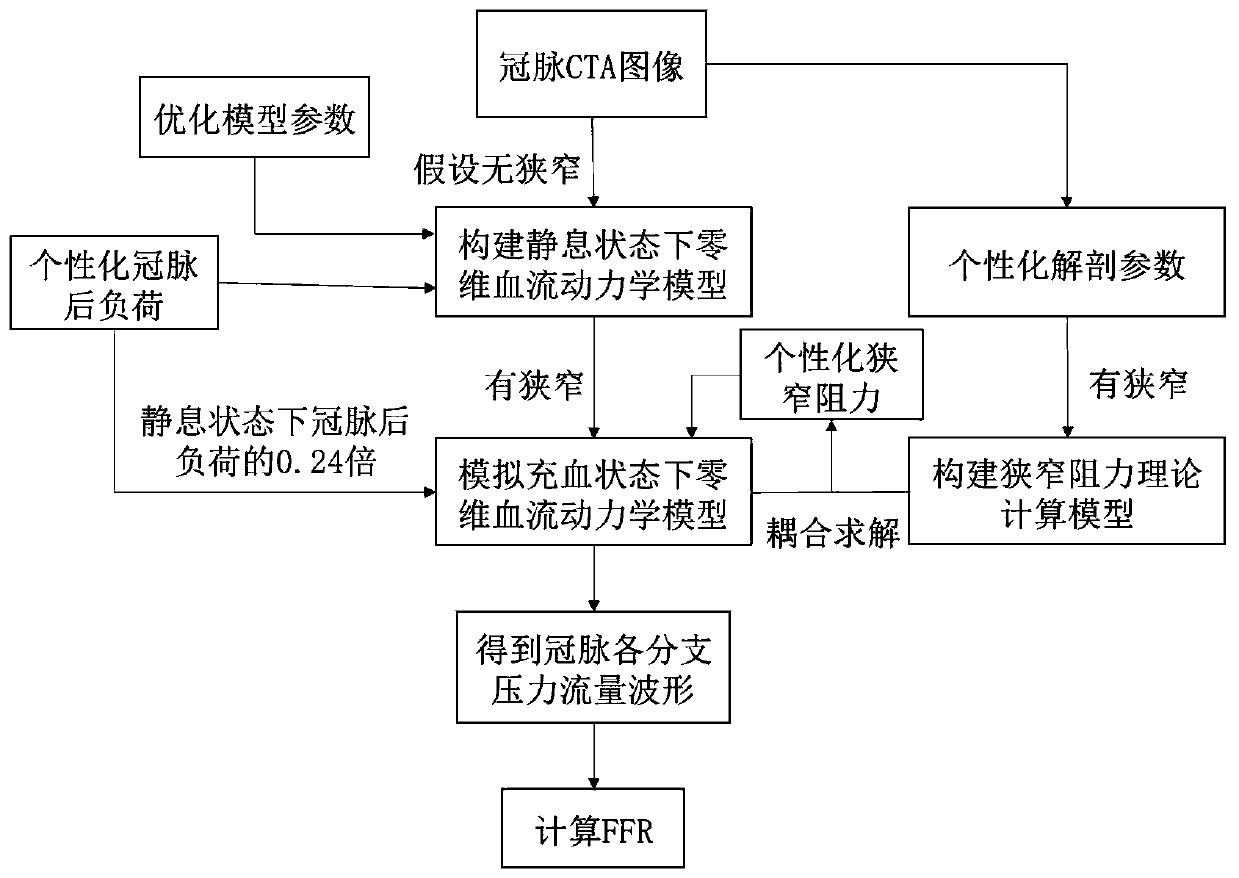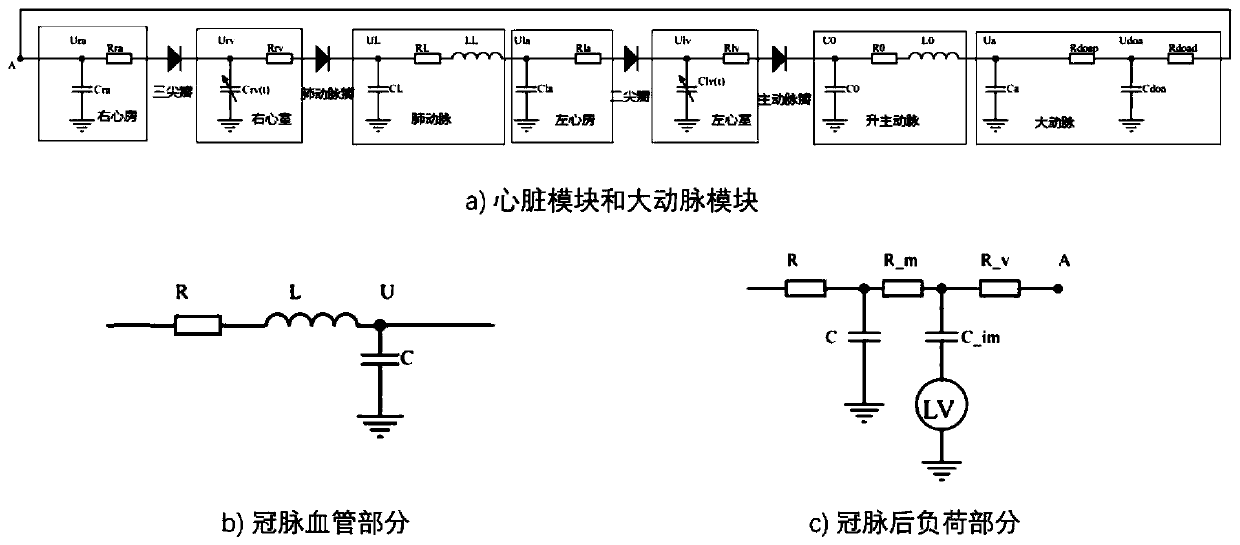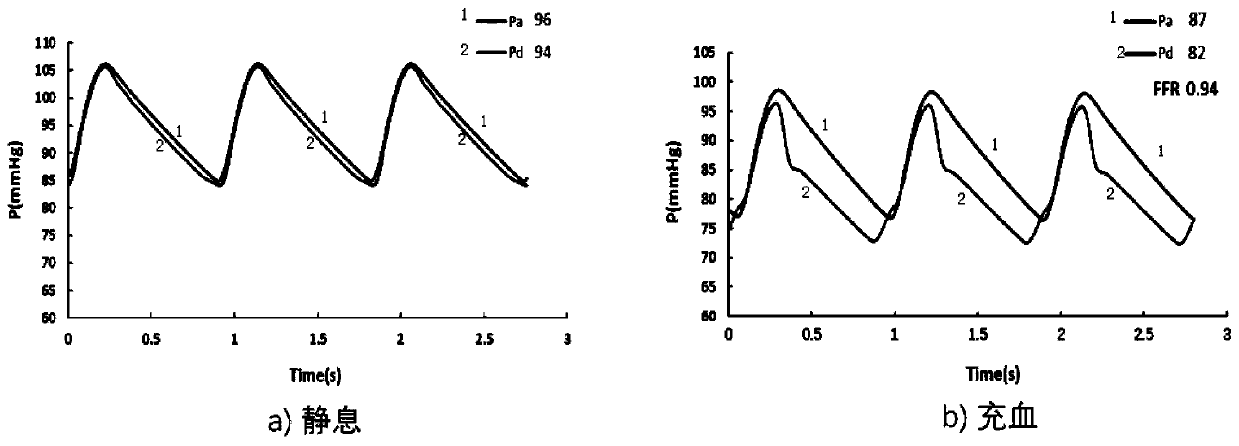FFR rapid calculation system model based on zero-dimensional hemodynamic model
A hemodynamics and system model technology, applied in the field of FFR fast calculation system, can solve the problems of long simulation time, large calculation amount, complex model, etc., and achieve the effects of improving simulation speed, simplifying the model, and reducing the calculation amount of the model
- Summary
- Abstract
- Description
- Claims
- Application Information
AI Technical Summary
Benefits of technology
Problems solved by technology
Method used
Image
Examples
Embodiment 1
[0066] Clinical extraction of personalized anatomical parameters based on CTA images (each coronary vessel length l, vessel diameter d, cross-sectional area A, diameter of coronary artery stenosis Ds, stenosis distal diameter Dd, stenosis length Ls, etc.), and collect personalized Physiological parameters (systolic, diastolic, heart rate, and cardiac output). Calculate coronary afterload, optimize model parameters, and construct a personalized zero-dimensional hemodynamic model in a resting state (assuming there is no coronary stenosis). When there is stenosis in the coronary artery, calculate the personalized stenosis resistance, use 0.24 times of the coronary afterload in the resting state to simulate the coronary afterload in the congested state (coronary stenosis), and construct the congested state (coronary stenosis) The personalized zero-dimensional hemodynamic model realizes the simulation of the blood circulation system. The schematic diagram (circuit structure) of th...
PUM
 Login to View More
Login to View More Abstract
Description
Claims
Application Information
 Login to View More
Login to View More - R&D
- Intellectual Property
- Life Sciences
- Materials
- Tech Scout
- Unparalleled Data Quality
- Higher Quality Content
- 60% Fewer Hallucinations
Browse by: Latest US Patents, China's latest patents, Technical Efficacy Thesaurus, Application Domain, Technology Topic, Popular Technical Reports.
© 2025 PatSnap. All rights reserved.Legal|Privacy policy|Modern Slavery Act Transparency Statement|Sitemap|About US| Contact US: help@patsnap.com



